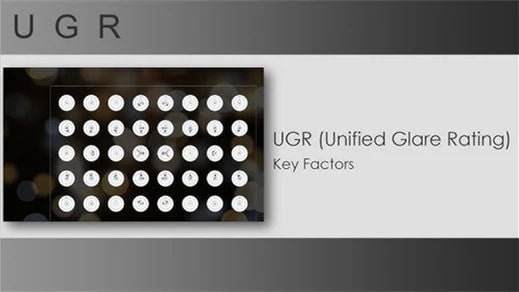In recent years, the adoption of LED lighting has surged, driven by its energy efficiency, long lifespan, and environmental benefits. However, one critical aspect that is often overlooked is the impact of glare produced by these lights. High glare from LED lights can have significant long-term effects on human health and well-being. This article explores what glare is, the potential adverse effects of prolonged exposure to high-glare LED lights, and how to mitigate these effects to create a more comfortable and healthy lighting environment.
Understanding Glare
Glare is a visual sensation caused by excessive and uncontrolled brightness. It can be categorized into two main types:
-
Discomfort Glare:
- This type of glare causes visual discomfort without necessarily impairing vision. It makes it difficult to see objects clearly and can lead to eye strain and fatigue.
-
Disability Glare:
- This type of glare significantly impairs vision, making it difficult or impossible to see. It is often caused by bright light sources that overwhelm the eye, reducing the contrast of the scene being viewed.
The Unified Glare Rating (UGR) is a metric used to quantify the level of discomfort glare produced by lighting installations. A lower UGR value indicates less glare and is associated with more comfortable lighting conditions.

Long-Term Effects of High Glare LED Lights
Prolonged exposure to high-glare LED lights can have several adverse effects on human health and well-being. These effects can range from minor discomfort to more serious health issues. Here are some of the key long-term effects:
-
Eye Strain and Fatigue:
- Continuous exposure to high levels of glare can lead to significant eye strain and fatigue. This is especially problematic in environments where people need to focus on tasks for extended periods, such as offices and classrooms. Eye strain can result in discomfort, headaches, and reduced productivity.
-
Headaches and Migraines:
- High glare can trigger headaches and migraines in sensitive individuals. The intense and uncontrolled brightness can overstimulate the eyes and the brain, leading to these painful conditions. This can affect an individual’s ability to work effectively and enjoy leisure activities.
-
Visual Performance and Safety:
- Disability glare can severely impair visual performance, reducing the ability to see contrasts and details. This is particularly dangerous in environments where safety is critical, such as industrial settings, roadways, and healthcare facilities. Impaired vision can lead to accidents and injuries.
-
Disrupted Circadian Rhythms:
- The human body’s circadian rhythm, or internal clock, is influenced by light exposure. Prolonged exposure to high-glare LED lights, especially those with a high blue light content, can disrupt circadian rhythms. This can lead to sleep disorders, fatigue, and a range of associated health problems, including decreased cognitive function and increased risk of chronic diseases.
-
Psychological Effects:
- Persistent exposure to uncomfortable lighting conditions can have psychological effects, contributing to stress, anxiety, and overall dissatisfaction with the environment. Poor lighting can affect mood and mental health, reducing overall quality of life.

Mitigating the Effects of High Glare LED Lights
To mitigate the adverse effects of high-glare LED lights, it is important to adopt strategies that improve lighting quality and visual comfort. Here are some effective measures:
-
Use Low UGR Lighting Solutions:
- Select LED lights with a low Unified Glare Rating (UGR). Manufacturers often provide UGR values for their products, making it easier to choose lighting solutions that minimize glare.
-
Optimize Lighting Layout and Design:
- Proper lighting design can significantly reduce glare. This includes positioning light fixtures to avoid direct lines of sight and using diffusers or lenses to spread light more evenly. Task lighting can also be used to provide focused illumination for specific activities without causing excessive glare.
-
Implement Adjustable Lighting Controls:
- Dimmable lighting systems and adjustable controls allow users to customize light levels according to their needs and preferences. This can help reduce glare and improve visual comfort in different settings and at different times of the day.
-
Consider the Color Temperature:
- The color temperature of LED lights can affect glare and visual comfort. Cooler temperatures (higher Kelvin values) tend to produce more glare. Choosing lights with a warmer color temperature (lower Kelvin values) can help reduce glare and create a more comfortable environment.
-
Incorporate Natural Light:
- Integrating natural light into the lighting design can reduce the reliance on artificial lighting and improve overall lighting quality. However, it is important to control natural light to prevent glare from direct sunlight.
-
Regular Eye Exams and Ergonomic Adjustments:
- Encouraging regular eye exams can help detect and address vision problems that may be exacerbated by high-glare lighting. Additionally, ergonomic adjustments, such as proper screen positioning and the use of anti-glare screen filters, can help mitigate glare in work environments.

Conclusion
By understanding the impact of glare and taking proactive steps to minimize it, we can create lighting environments that enhance comfort, productivity, and overall quality of life. As LED technology continues to evolve, it is essential to prioritize visual comfort alongside energy efficiency and sustainability. This holistic approach to lighting design will ensure that we reap the full benefits of LED lights without compromising on health and well-being.


































Leave a comment
This site is protected by hCaptcha and the hCaptcha Privacy Policy and Terms of Service apply.